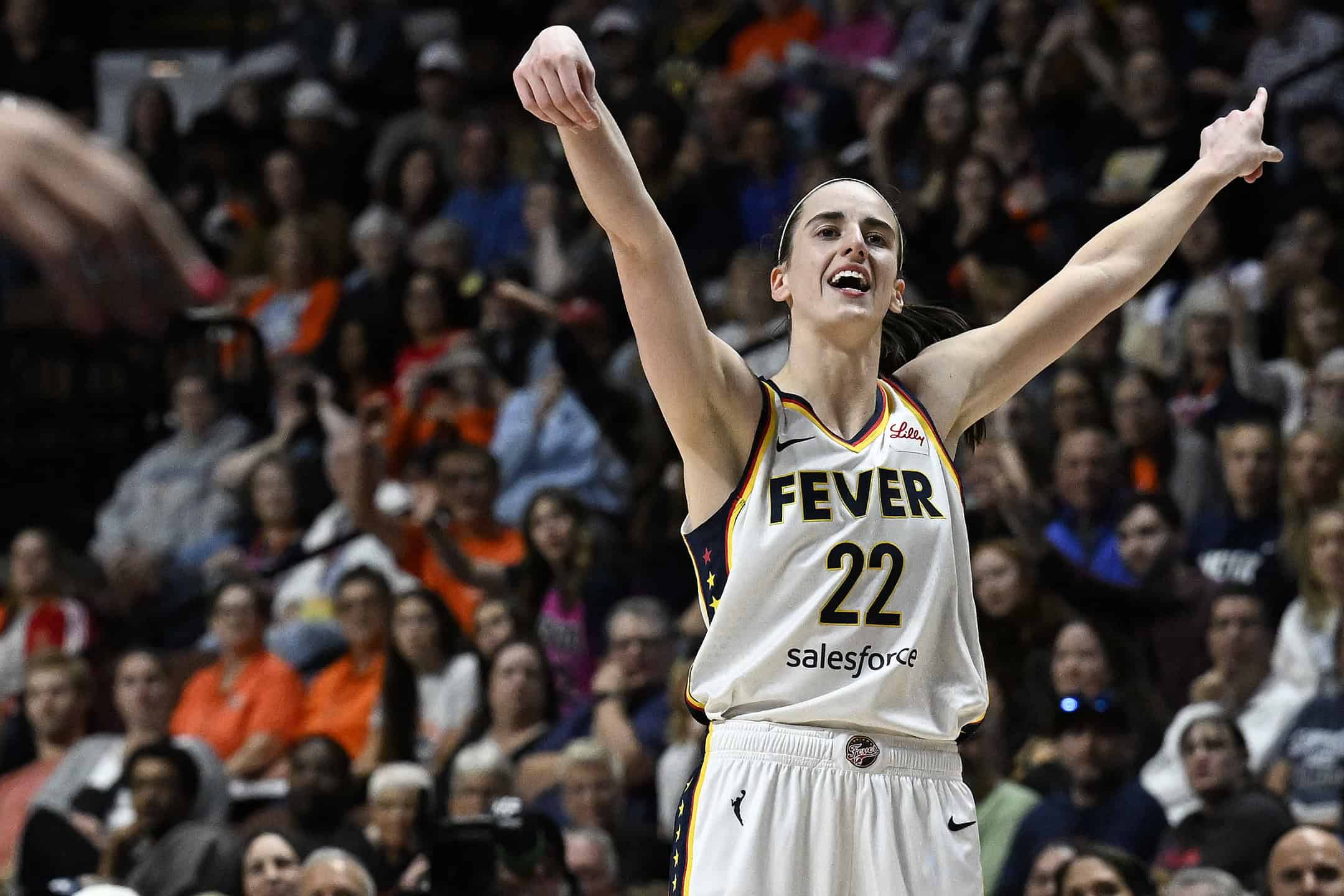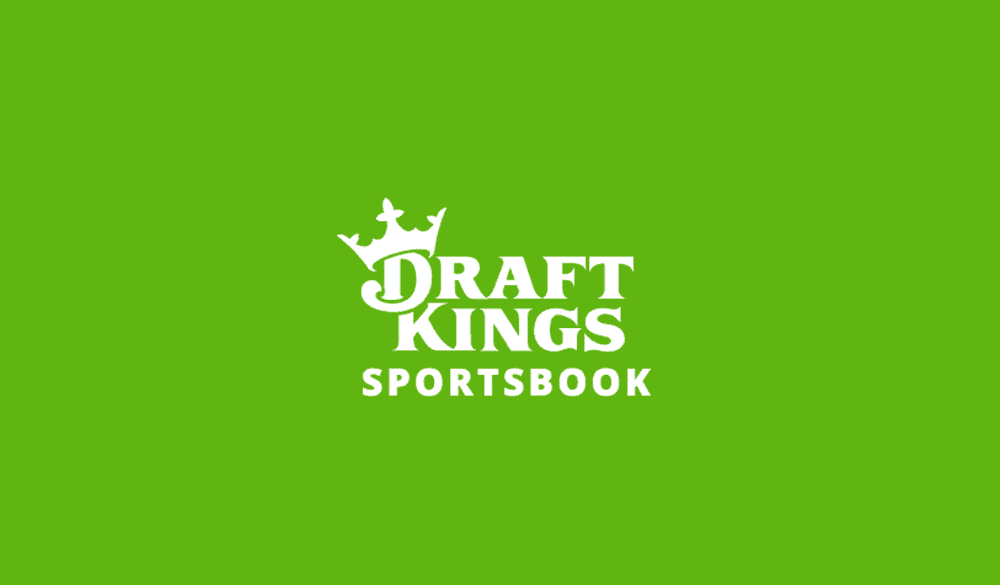After years of trending in the right direction, the WNBA is exploding in popularity with Caitlin Clark and Angel Reese taking the league by storm. So how can you get in on the action? Player props are one great way to do so — and we’ll be talking about how to bet on WNBA player props today. Make sure to check out our WNBA betting tools or our sports betting promos while you’re here! Anyway, let’s talk about how to bet on WNBA player props as I run through my tips, strategy and expert advice.
How to Bet on WNBA Player Props: Tips, Strategy & Expert Advice

Ditch the guesswork while doing some fun bets to make. Start making smarter, sharper +EV bets with a FREE TRIAL of Portfolio EV. Visit the Portfolio Betting page now!
How to Bet on WNBA Player Props
You can make money as a successful WNBA player prop bettor through a handful of different means. Most bettors like to evaluate statistics, whether they are traditional or advanced when generating their projections.
It’s also important to consider players’ roles and injuries, both of which add necessary context to their performance. Let’s go through each topic one by one as we discuss how to bet on WNBA player props. You may already be familiar with some of these concepts in sports betting, but understanding how sharp bettors use them to their advantage is key.
However, before we get into some of the best methods to make WNBA player prop projections, let’s talk about Portfolio EV’s market-based approach to WNBA player prop (and all other forms of) betting.
How to Use Portfolio EV
Most people understand sports betting as a way to use your sports knowledge to outsmart the books. Some of us are smart enough to do that on occasion, but it’s very difficult to do on a regular basis.
But what if I told you that you don’t need to know anything about sports to turn a profit on the WNBA — or, really, any sport? There are two main methods for profitable sports betting: projections-based approaches and market-based approaches.
The latter doesn’t require you to know anything other than how sportsbooks operate. Both approaches use different sets of information to generate the odds of a bet winning, helping you identify wagers with positive expected value, or +EV.
Projection-based models are easier for new bettors to understand because they rely on statistics. They’re very similar to those used by fantasy sports websites to predict how well your team will perform in a given week.
However, market-based models can be harder to grasp. They rely on the idea that some odds (and the actions bet on those odds) are sharper than others. For example, if Pinnacle, known for its sharp odds, has a bet priced at -150, but BetMGM, known as a public book, lists the same bet at +150, it’s usually smart to take that bet.
Being able to identify which book are sharper can be hard. Swapping back and forth between a sharp book and every public one to find an edge and the best price would take a lot of time, too. That’s why Portfolio EV’s WNBA betting model does the hard work for you. Let’s take a quick look at an example wager and how our product team describes each of the key terms:
Bet Size: The recommended bet size as a percentage of your bankroll. This metric is based on a fractional Kelly Criterion approach that leads to a reasonable balance of minimizing risk of ruin while maximizing potential reward.
EV: An abbreviation for “expected value,” this metric estimates the long-term profitability of a wager by taking into account the probabilities/payouts associated with each potential outcome.
xWin: The probability of winning the bet implied by the Sharp Sportsbook Algorithm true odds.
OS Rating: The OS rating provides a rating for each +EV bet. An OS rating above 20 signifies an exceptional bet. Ratings between 10 and 20 are highly favorable bets. Finally, a rating between 0 and 10 indicates a solid bet. We factor in the EV, expected win, bet size, and negative geometric drag to calculate this rating.
Hold: The synthetic hold across the entire market, which is the loss a bettor would sustain if he bet both sides of the market to win equal amounts. The larger the hold, the more difficult it is to beat that market.
True Odds: Odds that represent the real statistical probability of any outcome in a particular sporting event.
How to Use WNBA Statistics in Player Prop Betting
Using Traditional Stats | Expert WNBA Player Prop Advice
No matter whether you’re taking a market-based or a projections-based approach, you should probably understand the basics of WNBA traditional stats. They’re usually what you’re betting on, after all — points, rebounds, assists and 3-pointers all count.
When analyzing traditional stats, you can look to a few different numbers for value. First are averages — it’s good to know how many points per game a player averages to when handicapping their WNBA player prop for that night. If you see a player who averages 15 points per game with a total of 17.5, the under could be a good bet.
Another type of number frequently used by bettors: trends. It can be useful to know whether your player has gone over or under their total lately — and, more precisely, how many games in a row they have done so. A player going over in their last five games might suggest the books are lower on them than they should be.
Personally, I like to use medians, but they’re tricky to find. Medians help us ignore the outlier performances that can make a player look better (or worse) than they really are. You may have to calculate these yourself, but they’re well worth it — a book with a line close to a player’s average but far from their median can be beaten.
Lastly, splits are also a handy tool for your WNBA player prop betting toolbox. We can “split” a player’s games based on certain factors, like where the game is played (home or away), which opponent they’re playing and the month. If a rookie is averaging 15.5 points per game on the year but 19.5 in the final month of the season, a line based on her full-season average might be inefficient.
Using Advanced Stats | Expert WNBA Player Prop Advice
While traditional stats measure what happens on the floor, advanced stats offer insight into how that happened. While it’s useful to know that a player came down with 15 rebounds, it would be more useful to know the rate at which they came down with them, as that would allow us to figure out whether they massively outperformed their averages (variance) or if that uptick in production was sustainable given what we’ve seen from them before.
By way of illustration, let’s look at A’ja Wilson. In her 2024 debut, she came down with 13 rebounds against the Phoenix Mercury. Considering she averaged 9.5 rebounds last year, that number may seem extra impressive.
However, Wilson’s production could have improved for a number of reasons. She could have seen a larger workload, thus getting more opportunities to get rebounds. Alternatively, she could have improved her efficiency, nabbing more rebounds per opportunity — or her efficiency could have looked better this game because she got lucky.
Advanced stats allow us to evaluate just that. Rebound rate measures the share of possible rebounds that a player comes down with. In 2023, Wilson recorded a solid 15.4% rebound rate. In this game, she recorded a 15.4% rebound rate. So, what conclusions can we draw from that information?
We can conclude that Wilson’s opening-game rebounding performance mirrored her production last year. She wasn’t meaningfully more or less efficient. That leads us to an alternative explanation: her minutes. She averaged 30.7 minutes in 2023 but recorded 35 in the game question.
Stats like rebound rate, assist rate, effective field-goal percentage and true shooting percentage are important to help us understand both how efficient a player is and whether a performance was truly an outlier. If Wilson had recorded 20 rebounds on a 30% rebound rate, it would be easier to see her big game as such an outlier — and thus unlikely to be a signal of future production.
Understanding WNBA Player Usage & Minutes
Usage and minutes are inherently related to the above points about efficiency. When a player who averages 25 minutes per game suddenly starts playing 15 to 20, it’s fair to expect their per-game averages to drop. If that same player were to start averaging 30, an increase should be expected. That then raises the question of how much of an increase we can expect.
Another way to tackle the above problem would be to look at Wilson’s rebounds per minute as opposed to her rebound rate. Again, in 2023, Wilson averaged 9.5 rebounds per game; in the 2024 opener, she recorded 13. Said another way, in 2023, Wilson averaged 0.31 rebounds per minute; in the 2024 opener, she averaged 0.37.
Wilson’s rebound prop was trading at 9.5 for that game on the WNBA player prop markets, exactly her average from a season before. Even if Wilson’s minutes didn’t increase and she played the 30.7 she averaged last year, she would have recorded 11.4 rebounds over that span.
So why did Wilson’s minutes tick up in the opener? In 2023, the Aces had Candace Parker, Cayla George and Alaina Coates (until she was traded halfway through the season) on the roster. Those two are now off the roster, replaced by only Megan Gustafson, forcing Wilson into a larger role at the five
While rotations won’t change like that every game, being able to estimate when a player may see more playing time and extrapolating their per-minute averages can be quite useful when betting on WNBA player props.
How to Use WNBA Injury News & Matchups
Injury news and matchups follow from the above point. Finding value on the WNBA player prop markets often comes down to understanding the differences between games and how they will affect players’ on-court production. Injuries and matchups are two sources of those differences.
For example, if A’ja Wilson were averaging 11.5 rebounds per game this year, but then the Aces lost their other center, Megan Gustafson, to an injury, that 11.5 would likely tick up. Her minutes may increase, creating an opportunity for over bettors if the total is too close to her average. Further, her average itself may increase with less competition for boards increasing her efficiency by ballooning her rebound rate.
Matchups are another important datapoint to consider. If Wilson came into a matchup with the best rebounding team in the WNBA while averaging 11.5 rebounds per game, it would be fair to expect the competition for boards to increase, possibly lowering Wilson’s rebound rate and rendering her less efficient.
While it’s difficult to quantify the exact effect of an injury or matchup, understanding how a player’s production may change in relation to other developments can give us an edge on the WNBA player prop markets.





























